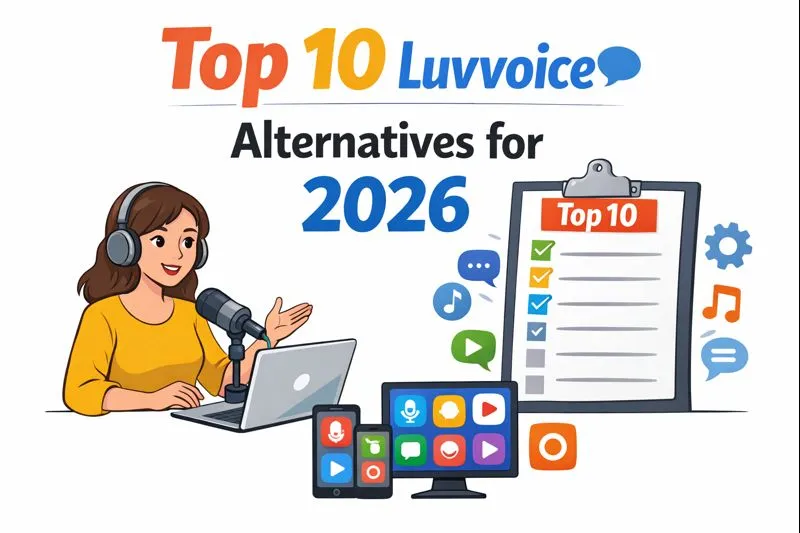Understanding Multi-Modal Emotion Recognition in Speech and Text
TL;DR
What is Multi-Modal Emotion Recognition?
Multi-modal emotion recognition? Sounds kinda sci-fi, right? But it's basically just teaching ai to read people better, like spotting if you're actually happy or just saying you are.
- Multi-modal emotion recognition uses, like, more than one way to figure out how someone's feeling. (A systematic survey on multimodal emotion recognition using ...) Understanding Multimodal Emotion Analysis with Imentiv AI - explains how analyzing different modes of communication improves accuracy. It's not just about the words you use, but how you say them, and what your face is doing, you know? (It's Not What You Say It's How You Say It | Jacob Morgan - YouTube)
- Think about it: speech gives away tone and rhythm, while text shows what you're actually thinking about.
- Single-mode analysis? Nah, that's like trying to guess a movie's ending from just the title – good luck with that. (Are you able to figure out the ending of every movie, TV show, or ...)
It's all about getting a fuller picture. A 2018 study published on ArXiv found that Combining audio and text data helps ai understand speech better. Multimodal Speech Emotion Recognition Using Audio and Text - this paper proposes a model that uses both text and audio for better speech understanding. Think of it like this:
The real magic happens when speech and text work together. It's not just about the individual clues, but how they interact. For example, a happy tone of voice combined with positive words like "amazing" and "fantastic" strongly suggests genuine happiness. But, if that same happy tone is paired with sarcastic words like "Oh, great, another meeting," the ai can detect the mismatch and infer sarcasm, not happiness. This interplay is what makes multi-modal recognition so powerful.
How Multi-Modal Emotion Recognition Works
Okay, so how does this multi-modal emotion recognition thing actually work? It's not as complicated as it sounds, promise! Think of it like this: your brain is already doing it all the time, piecing together clues from different senses to figure out what's going on. ai just needs a little help catching up.
Feature Extraction is Key: First, we gotta pull out the important stuff from both speech and text. For speech, it's not just what you say, but how you says it, right? Things like tone (the general feeling conveyed by your voice, like warm or cold), pitch (how high or low your voice is), and rhythm (the speed and flow of your speech) all give away how you're feeling. there's also text analysis going on to figure out the emotional tone of the words themselves, and how they relate to each other. This means looking at word choice, sentence structure, and even punctuation to understand the underlying sentiment.
Sentiment Analysis Matters: Sentiment Analysis is important to figuring out the emotional tone of the text. So, if you're typing in all caps with a bunch of exclamation points, it's probably not a calm, rational discussion, lol. Tools like Word2Vec and BERT are used to understand the real meaning of the words, and how they fit together. Word2Vec creates numerical representations of words, so words with similar meanings are closer together in this representation. BERT, a more advanced model, understands words in context, meaning it knows that "bank" can refer to a financial institution or a river's edge based on the surrounding words. This helps in grasping the true emotional weight and relationships between words.
Fusion is Where the Magic Happens: This is where you put it all together. There's a few ways to do it, but basically, you're trying to get the ai to understand how the speech and text work together to show emotion. According to a comprehensive review of multimodal emotion recognition, there are diverse strategies to fuse multiple data modalities to identify human emotions.
Early fusion combines the raw data from speech and text at the very beginning. This can be good because it might catch subtle interactions between the two signals early on, but it can also be computationally expensive and sensitive to noise in either stream. Late fusion, on the other hand, analyzes speech and text separately first, and then combines their individual results. This is often more robust, as it can handle missing or noisy data in one modality better, but it might miss some of the finer, intertwined emotional cues. Hybrid fusion is a mix of both, trying to get the best of both worlds by combining elements of early and late fusion.
These fusion techniques are crucial because they allow deep learning models to perform the complex task of integrating information from different sources.
The Role of Deep Learning
Deep learning? It's kinda like giving ai a super-powered brain boost, right? Instead of just telling it what to look for, you let it learn what's important.
cnn's are your visual gurus: These are great at sussing out patterns in images and audio. Think facial expressions or speech spectrograms. A speech spectrogram is like a visual representation of sound, showing how the frequencies in speech change over time. CNNs can analyze these spectrograms to identify patterns associated with different emotions, much like they'd find shapes in an image. Imentiv AI, as mentioned earlier, uses CNNs to grab emotion insights from videos.
rnns love sequences: Got data that unfolds over time, like speech or text? rnns are your friend. They remember context, which is huge for catching emotional shifts in conversations.
attention mechanisms are focus masters: These help the ai zoom in on the most important bits of data. Imagine a retail setting where ai hones in on specific words that signal frustration in customer service.
So, how do you actually teach these models? Well, let's talk about training data...
- Training Data is Everything: Deep learning models, like the CNNs and RNNs we just talked about, need a lot of data to learn. For emotion recognition, this means feeding them examples of speech and text that have been labeled with the correct emotions. The quality and quantity of this data are super important. If the data is biased (e.g., mostly happy examples), the model might not be good at recognizing other emotions. Similarly, if the labels aren't accurate, the model will learn the wrong things. Getting good, diverse, and accurately labeled training data is a big challenge in this field.
Applications in AI Voiceover and Audio Content Creation
Okay, so ai voiceovers are getting kinda crazy good, right? You can practically make a computer sound like Morgan Freeman now. But, how does emotion recognition play into this? Let's break it down:
Realism is the Name of the Game: ai voiceovers used to sound, well, robotic. Now, with multi-modal emotion recognition, ai can adjust it's tone to match the feel of the script. Think subtle inflections for sadness, or a little extra pep for excitement. For instance, tools are emerging that can take a neutral script and generate a voiceover that sounds genuinely empathetic for an audiobook about grief, or enthusiastically encouraging for a fitness app.
Nuance is Key: It's not just about sounding happy or sad. It's about capturing the right kind of happy, or the specific shade of sadness the script needs. If you are making a video about the loss of a pet, you would want the voiceover to have proper empathy for the situation. This means the ai needs to understand the context and deliver a nuanced emotional performance.
Customization Galore: ai tools like Kveeky let you tweak everything – from the voice's pace to its emotional intensity. This means you can get a voiceover that's perfectly tailored to your project. Imagine creating personalized audiobooks where the narrator's emotion dynamically adjusts based on the reader's inferred mood, or developing game characters whose dialogue delivery changes based on the in-game situation. Even accessibility tools can benefit, with ai voices that can convey more emotion to aid understanding for individuals with hearing impairments.
Basically, multi-modal emotion recognition is making ai voiceovers way more human, and that's pretty cool!





